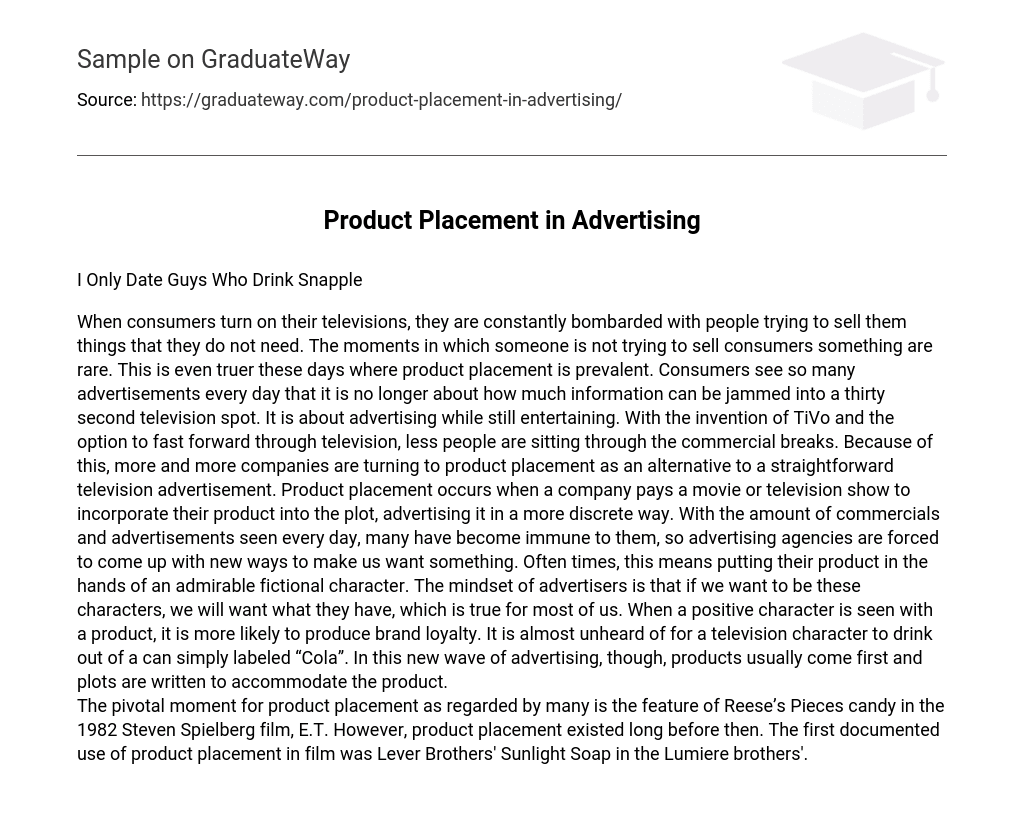I Only Date Guys Who Drink Snapple
When consumers turn on their televisions, they are constantly bombarded with people trying to sell them things that they do not need. The moments in which someone is not trying to sell consumers something are rare. This is even truer these days where product placement is prevalent. Consumers see so many advertisements every day that it is no longer about how much information can be jammed into a thirty second television spot. It is about advertising while still entertaining. With the invention of TiVo and the option to fast forward through television, less people are sitting through the commercial breaks. Because of this, more and more companies are turning to product placement as an alternative to a straightforward television advertisement. Product placement occurs when a company pays a movie or television show to incorporate their product into the plot, advertising it in a more discrete way. With the amount of commercials and advertisements seen every day, many have become immune to them, so advertising agencies are forced to come up with new ways to make us want something. Often times, this means putting their product in the hands of an admirable fictional character. The mindset of advertisers is that if we want to be these characters, we will want what they have, which is true for most of us. When a positive character is seen with a product, it is more likely to produce brand loyalty. It is almost unheard of for a television character to drink out of a can simply labeled “Cola”. In this new wave of advertising, though, products usually come first and plots are written to accommodate the product.
The pivotal moment for product placement as regarded by many is the feature of Reese’s Pieces candy in the 1982 Steven Spielberg film, E.T. However, product placement existed long before then. The first documented use of product placement in film was Lever Brothers’ Sunlight Soap in the Lumiere brothers’.





